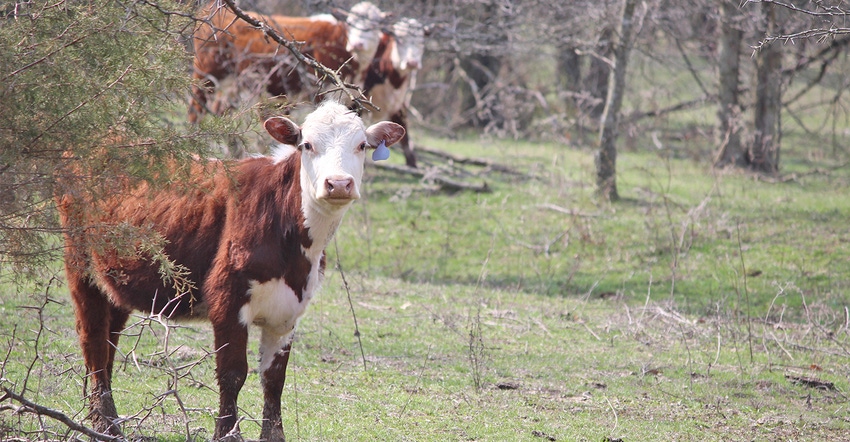April 12, 2018

After a long winter of feeding hay, producers are anxious to turn cattle into the fescue pasture. However, Patrick Davis, University of Missouri Extension livestock specialist, says patience pays off for cattle producers who wait for fescue to grow before turning cattle out for spring grazing.
Davis says it is better for fescue to reach heights of 3 to 8 inches before allowing cattle onto pastures. Proper forage height is critical to get the most out of a grazing system throughout the year, he adds.
Davis offers four reasons for waiting to graze fescue:
1. It reduces the risk of fescue toxicosis. Recent research by Sarah Kenyon, an MU Extension agronomist, found that ergot alkaloid levels are most toxic in the bottom 2 inches of fescue. Grazing too short puts cattle at risk. Another reason is that fescue tries to make seed in the early spring. As stems elongate and seed heads emerge, the toxic alkaloids concentrate in the seed.
2. It creates a strong root system. Allow fescue to grow at least 3 to 8 inches. Plants need good roots to take up water and nutrients. Grazing too soon reduces the opportunity for roots to grow well, and it can destroy the root structure. This results in thinner grass stands and infestation of weeds.
3. It provides balanced nutrition. Overgrazing also causes cows to eat more stems and fewer leaves. The stem is less nutritious than the leaf, so cattle may not consume enough nutrients. Prevent forage tillers from making a seed head by grazing before seed heads form. This allows leaves from other tillers from the same plant to grow rapidly, improving production and increasing yield of digestible nutrients.
4. It improves the stocking rate. Consider rotational grazing. When keeping fescue at 3 to 8 inches in a rotational grazing system, rotational grazing allows better control of grazing pressure and height than in a continuous grazing system. Once the system is in place, monitor the stocking rate of the herd to match it with forage productivity.
This is difficult to do by management alone during periods of rapid forage growth. “As I talk with cattle grazers — usually early in the grazing season — they will have excess forage and deficient stocking rate,” Davis says. Too low a stocking rate generally leads to overmature, low-quality forage.
“As the grazing season begins, planning is important so that you manage the fescue at the proper height to help ensure adequate animal performance and plant persistence,” Davis says.
For questions about stocking rate and proper management of fescue pastures, contact your local MU Extension agronomy or livestock specialist.
Source: MU Extension
You May Also Like




